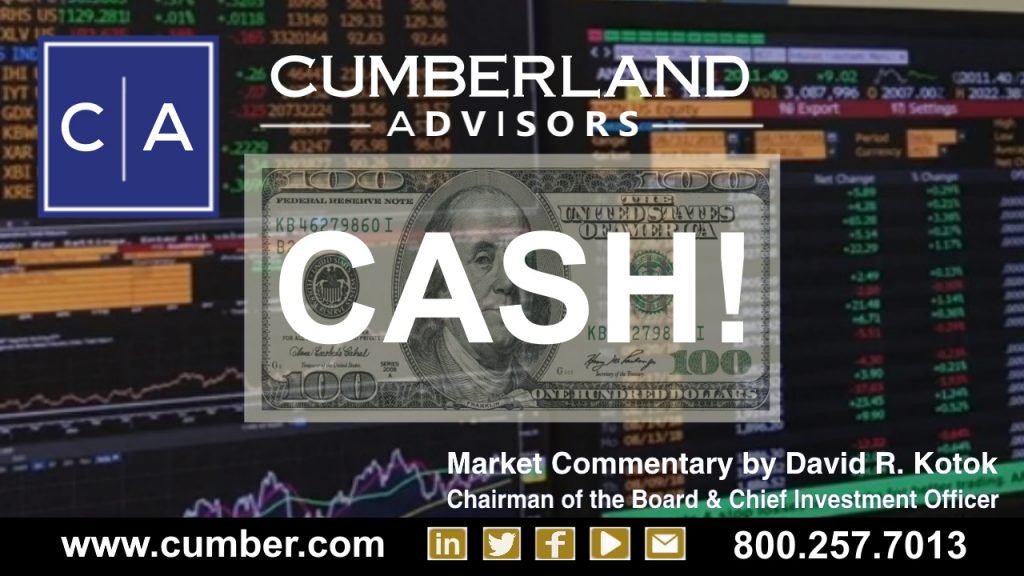We would like to suggest that readers take time to read Josh Brown’s December 29 column at The Reformed Broker, “How to avoid bear markets” (https://thereformedbroker.com/2020/12/29/how-to-avoid-bear-markets/). We thank Josh’s colleague Barry Ritholtz for including it in the daily Ritholtz Reads column.
Here’s a summary excerpt from Barry Ritholtz’s daily column (January 2, 2020):
“There’s a very simple way to avoid bear markets. What you do is pull all of your money out of the stock market and just let it accumulate in your bank account. Others will make huge fortunes as sustained bull markets carry on for hundreds of percentage points for years on end. Those people who participate will be forced to endure regular ten, twenty and even thirty percent drawdowns along the way. They will feel uncomfortable during these drawdowns. They might have even looked bad for a while.”
Josh Brown’s column and Barry’s excerpt succinctly phrased the investor’s dilemma: “What do I do with my cash, which earns nearly zero?” And/or “How can I bring myself to invest it now at all-time highs in the market?” Further, “Aren’t all the valuation metrics so high, and isn’t there a risk of a market collapse?”
While we’re at it, please add a new question we are starting to get in our email: “Should I buy Bitcoin instead of holding cash or other assets? Can Bitcoin be my ‘store of value’ since stocks are so highly priced?”
For Cumberland, the last question is the easiest to answer. We do NOT own Bitcoin in any managed account. We do NOT own any ETF or fund that is based on Bitcoin. If you want to trade Bitcoin or other cryptocurrencies, we cannot help you.
We do own stocks from the US and elsewhere in the world in our various strategies. We do own US dollar-denominated bonds in the taxable area and in the tax-free municipal area. We do NOT own foreign-currency-denominated bonds. We do favor higher-grade credits. We do have a separate strategy called Pandemic-Affected Municipal Securities (PAMS). All our market materials are publicly available. Just send me an email if you want to see them.
Let’s talk about cash.
At a Sunday night gathering a year and a half ago at Camp Kotok, 27 of us sat on the deck at Leen’s Lodge for our closing discussion session. I posed the question, “What would you do if you truly believed in your heart of hearts that the shorter-term interest rate was going to be near zero in short-term Treasuries for a period of years?” We went around the deck with everyone giving their answers. Details emerged having to do with near-zero rates over intervals of 2, 3, 5, and 10 years, but the fundamental answer was uniform among the group: If you really, really, really were convinced that the shorter rates were going to stay extremely low for a long time, you would have to decide what to do you're going to do with your cash which earns zero. This is especially true when you realize that the so-called “riskless” cash is losing buying power at the rate of 2% per year and that the central banks of the developed world are trying to get it to lose value at a rate above 2% per year.
For larger investors ($50 million or more) there are ways to raise the earnings on cash to higher than zero without taking on much credit risk. Think of that yield as somewhere under 1% but above zero. But that set of opportunities is not available to most individual investors or to smaller family offices and other types of accounts. So, for this discussion, let’s call the earnings on cash “near zero.”
Your options if you want to stay in liquid securities are few. Stocks are available with risk and high valuations by historical standards. Bonds are available with low yields by historical standards. A mix of the bond and stock categories can be achieved. You can add geographical diversification (other currencies or countries or regions). And you can add diversity among investment strategies. So in the end, we can get to asset diversification, geography diversification, currency diversification and strategy diversification. Combine them and use risk analysis tools and one can put together a portfolio of liquid securities to address the problems of a zero earning cash alternative.
We suggest clients combine these strategies in a mix of allocations that reflect their risk tolerances and time horizons. We do that in several different ways and will share those details with anyone who is interested.
Another option is non-liquid securities like real estate or farmland or private equity or timber or collectibles or forms of precious metals (like gold bars in a safe). Each of these has pros and cons. We do not use them, but we have many clients who do have allocations to one or more of these categories.
We advise clients to consider all forms of risk tolerances if those clients are individuals, retirement plans, or family offices. Institutional frameworks are different. They have constraints, and many have longer-term time horizons (insurance companies and charitable foundations are examples). So each of these institutions has to determine the asset allocation to cash for itself, and there are techniques available to help. I sit on the advisory board of an organization, Riskbridge Advisors, that helps institutions with these questions (https://www.riskbridgeadvisors.com/about.html).
Back to cash.
The first priority is that you hold what cash savings you need for your safe time horizon usage. Six months or a year is normal. Specific numbers depend on your individual expectations about cash coming in and cash scheduled to go out.
Next, you can also hold what additional cash is needed to give you some “I can sleep at night” comfort. Losing sleep because of an asset allocation is a losing proposition. We do not recommend it.
Then you have to start with the remainder. We look at the stock/bond allocations in multiple ways. Right now, at Cumberland, bonds are deployed in barbell strategies. (We’ve written about that approach many times.) Barbells mean a near-cash equivalent or shorter-term maturity is part of the bond strategy already. We build that into total-return bond management. So the allocation to bonds is active, and it is changing with market conditions.
Stocks. We think the return of inflation and the subsequent return of higher interest rates is coming, but it will come slowly in the beginning. We have already seen some adjustment of interest rates upward. We believe that the central banks of the world’s developed countries are committed to policies which will try to prevent market shocks. Those shocks can include an abrupt spike of higher interest rates. Central banks must also avoid triggering a rapid resurgence of inflation. These CBs have their work cut out for them. If we are wrong on that, stock markets are in for a serious shock and a difficult correction.
If we're right about the slower return to higher inflation and rates, then stock prices can go higher as the economic recovery continues. There will be volatility, but the directional trend is upward. The recovery is hard to forecast worldwide because of the uneven damage that the COVID-19 pandemic is dealing to economies around the globe. The markets are looking beyond the immediate headlines. Markets are discounting the recovery as a positive force and are pricing in estimates for 2022 and 2023. Furthermore, markets are anticipating that the rebound will be robust and prolonged. We often hear predictions hailing the “Roaring 2020s.” They may come to pass. We expect the economic rebound to be unusually robust.
We will separately write about how to value stock markets and what to do when the valuation metrics start with a prolonged period of very low interest rates. That piece is coming soon.
As today’s commentary is being written, our US stock market ETF accounts are nearly fully invested. Some of our quantitative strategies hold a cash allocation awaiting an entry opportunity. Tactical and international strategies have varied cash components. Were happy to share the information. Of course, any of these positions can change at any time.
David R. Kotok
Chairman of the Board & Chief Investment Officer
Email | Bio
Links to other websites or electronic media controlled or offered by Third-Parties (non-affiliates of Cumberland Advisors) are provided only as a reference and courtesy to our users. Cumberland Advisors has no control over such websites, does not recommend or endorse any opinions, ideas, products, information, or content of such sites, and makes no warranties as to the accuracy, completeness, reliability or suitability of their content. Cumberland Advisors hereby disclaims liability for any information, materials, products or services posted or offered at any of the Third-Party websites. The Third-Party may have a privacy and/or security policy different from that of Cumberland Advisors. Therefore, please refer to the specific privacy and security policies of the Third-Party when accessing their websites.
Sign up for our FREE Cumberland Market Commentaries
Cumberland Advisors Market Commentaries offer insights and analysis on upcoming, important economic issues that potentially impact global financial markets. Our team shares their thinking on global economic developments, market news and other factors that often influence investment opportunities and strategies.


